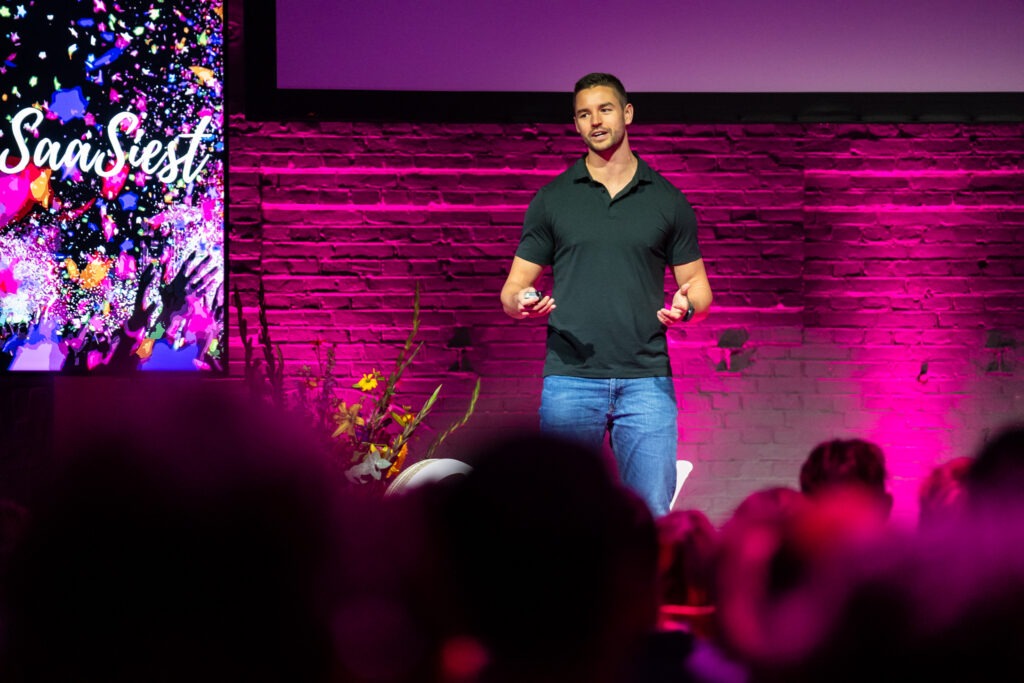
How do you generate $1 billion in self-serve revenue? Wes Bush, the founder and CEO of ProductLed, has an answer – but it’s not as simple as embracing product-led growth. While PLG is a key ingredient, Wes argues it’s only half the equation. The rest of the story lies beneath the surface, in what he calls the product-led organization.
In this article, we’ll walk you through the principles behind his transformative product-led system, exploring the balance between PLG and PLO, how to design an intentional free model, and crafting an onboarding experience that drives value and retention. Let’s dig in.
The PLG surface-level trap
Don’t stop at surface-level PLG. This shallow approach often results in suboptimal outcomes, such as limited organizational buy-in and lackluster results. Common mistakes include focusing exclusively on pricing, onboarding, or the free model without integrating these elements into a cohesive strategy.
The outcome? Many companies prematurely kill their PLG efforts.
So, what’s the missing piece? According to Wes, it’s the deeper foundation: the product-led organization.
Building a product-led organization
To create a thriving PLG motion, you need to align it with a robust PLO. This means:
- Company-level strategy: PLG must connect to overarching business goals.
- User understanding: Know your ideal customer’s journey and pain points.
- Capability development: Build the right tools, teams, and processes to execute.
- Experimentation: Identify bottlenecks and continuously refine through testing.
The strength of your PLG strategy will always mirror the maturity of your PLO. A weak foundation leads to weak results, while a strong alignment can generate massive value.
Introducing the product-led system
Wes outlines a nine-component framework for building a successful product-led business. While all components are critical, he focuses on two key areas:
- Designing an intentional free model.
- Crafting frictionless onboarding.
Let’s break these down.
How intentional is your free model?
One of the biggest levers in PLG is your free model. Wes explains the spectrum of free models, from “barely free” to “too much free.” The sweet spot lies in delivering value that entices users to upgrade without cannibalizing your premium offerings.
Wes draws a parallel to super mario:
- Small mario represents the user who signs up.
- The flower is your free offering that empowers the user.
- But instead of leaving them as a slightly improved Mario, the goal is to help them achieve transformational success.
Finding this balance is critical. A free model should:
- Solve a meaningful problem.
- Drive a tangible transformation.
- Build trust while leaving room for upselling.
The deep model framework
Wes shares a practical framework for designing your free model:
- Ideal user: Clearly define your target user.
- End outcome: What does success look like for them?
- Challenges: Identify obstacles that prevent them from achieving success.
- Solutions: Offer tools or features that address these challenges.
For example, Canva’s free model helps users design simple graphics – an entry-level success. From there, Canva empowers users to tackle more complex projects, creating a pathway to paid features.
Case Study: Tettra’s freemium pivot
Wes highlights the story of Tettra, a knowledge management platform. Initially, Tettra relied on a 15-day trial, but users weren’t getting enough value within that time frame. By switching to a freemium model, the company saw a significant uptick in signups, upgrades, and retention.
The lesson? A well-designed free model not only drives adoption but also lays the groundwork for long-term growth.
Case study: Snappa
Snappa, a graphic design tool, had over 10,000 weekly signups but struggled with activation. The culprit? An email activation step that blocked 27% of users from entering the product.
The solution was simple but effective: delay the email verification until after users accessed the product. The result? A 20% revenue increase in just one month.
The bowling alley framework
Wes Bush compares effective onboarding to a bowling game. The ultimate goal is the “strike”, the moment users experience your product’s value. To get them there, you need “bumpers” that guide and support them along the way. These bumpers can take various forms: checklists, in-app guides, or tooltips that keep users focused on their goals. Additionally, a “conversational bumper”, proactive support like emails, live chats, or onboarding calls, can help users overcome obstacles and stay engaged. By mapping the fastest path to value and eliminating unnecessary friction, you create a seamless experience that transforms new users into loyal advocates.
Where to go from here?
Wes concludes with three actionable steps:
- Recognize that PLG is only half the story. Building a PLO is equally important.
- Design an intentional free model. Ensure it solves a meaningful problem and creates a pathway to success.
- Craft a frictionless onboarding experience. Make it effortless for users to reach value.
With these strategies, you can transform your PLG motion into a scalable, revenue-generating engine.
Wes Bush’s $1 billion self-serve revenue story is a testament to the power of a well-executed product-led system. By balancing PLG and PLO, designing a thoughtful free model, and optimizing onboarding, any company can unlock new levels of growth. So, what’s your next move? Will you dive below the surface to build a truly product-led organization? The results might just surprise you.